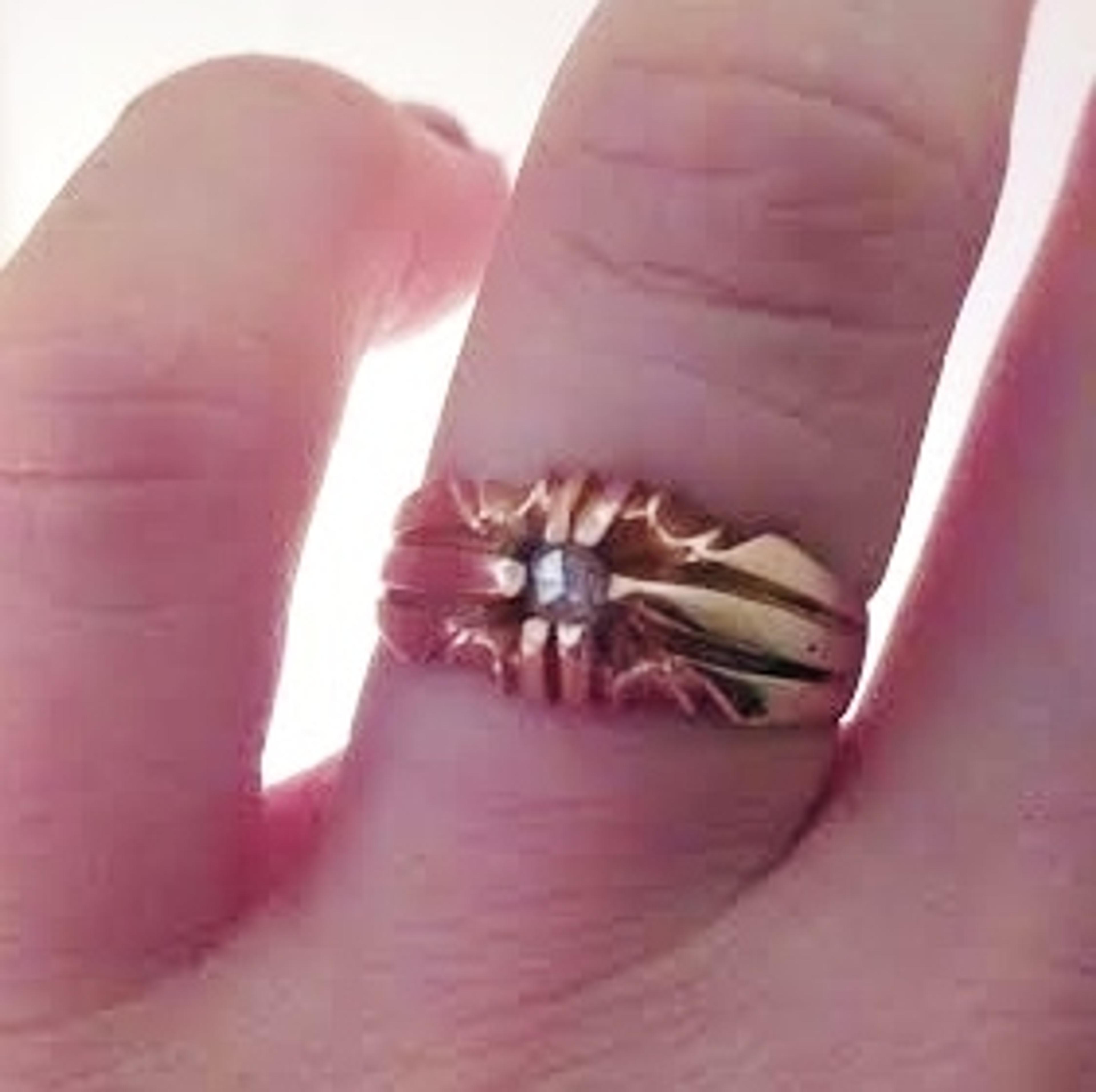Why I spent a month's wages on charity, not an engagement ring
Although my friend has not yet found the love of his life, he once sought counsel from a female friend on his idea for a future marriage proposal: “Would you find it romantic if we met at an empty field in a poor African village, I got down on one knee and said, ‘With the money I could have used to buy you a beautiful diamond ring, instead I funded the construction of a new school in this empty field’?”
She responded: “If you got down on one knee and said, ‘With the money I could have used to fund the construction of a new school in this empty field, instead I bought you this beautiful diamond ring’—now that would be romantic.”

I often joked about my friend’s plan, but somehow the idea always sparked interesting conversations with my fiancée Charlotte. When we decided to become engaged this year, we decided to forego an expensive diamond. Instead, I bought a more affordable ring from a vintage store, and donated the difference between that and one month’s salary to GiveDirectly, one of GiveWell’s highest-ranked charities.
Most friends and family supported the decision, but it was met with some hesitations. I hope that by answering the most common questions we’ve received, I can explain the reasoning behind this decision—and hopefully convince you that a “donation diamond” could be the right decision for other couples as well.
If you don’t spend at least one month’s salary on a ring, won’t everyone think you’re cheap?
Money is no substitute for love. Somehow the archaic idea that “the more someone spends on you, the more he or she loves you” is still commonplace—even though once a couple gets married, they will often share their finances. (So that expensive gift your spouse-to-be just bought you is actually coming out of your future savings.)
Isn’t a diamond ring the traditional way to show your love for your future wife?
Yes and no. Different cultures use varying types of jewelry to symbolize betrothal and marriage. The popularity of engagement rings (as a primary symbol of commitment) has traded back and forth with wedding band numerous times through history.
In 1930s America, when the use of diamond engagement rings was falling, the DeBeers cartel launched a pervasive advertising campaign to re-popularize them. Their slogan of “a diamond is forever” and the notion of spending one month’s salary were a part of that campaign.
Because of DeBeers’ global monopoly, they were also able to artificially inflate the prices of otherwise not-so-scarce diamonds.
If the premise of an engagement ring is so artificial, why bother with one at all?

Most cultural norms were invented by someone at some point in time, and the more important question is whether it’s worth buying into them in order to be a part of that culture. Mother’s Day may have been manufactured by the greeting card industry to increase their revenue, but I still think it’s nice that everyone gets their mother a card on the same day. (And when I say everyone, I’m forgiving my occasional lapses in calendar memory.)
Charlotte and I believe in the value of commitment, and in the ability of symbols to enhance that commitment by putting it on display for others to see. There’s something beautiful about observing a type of ring and automatically knowing that its wearer will soon vow to preserve her love.
In other words, it’s certainly worth investing some money for a durable symbol of our commitment. We just decided that hundreds of dollars was a more reasonable price range than thousands for that particular symbol—then used the remainder for something more valuable than a signifier.
And maybe, if enough people take on the idea, charity can become the new signifier.
Why is charity so valuable, if most charities use their money ineffectively?
Luckily, there has been a lot of research on this topic (check out the rest of the Giving What We Can Blog).
Each year, GiveWell ranks the world’s most transparent, cost-effective charities. As an example, GiveDirectly aims to deliver almost 90 cents of every dollar you give directly to the people who need it most.
Isn’t it impossible to find a ring that is both beautiful and durable for less than one month’s salary?
Not only is it possible, it’s actually pretty easy. Many vintage stores sell previously-worn jewelry at great prices, including diamonds. Our particular ring is from the 1900’s. If it’s already lasted one hundred years and still looks great, we figure it can go a hundred more.
And Charlotte often reminds me that “vintage is in now,” or something like that.
So should I not buy a new iPhone, because that’s also a “waste” of money?
I’m not trying to convince you to donate every spare dollar you have. I have an iPhone, too. I “waste” my money on take-out meals, on an online subscription to Netflix, and most recently on a battery-powered perpetual motion machine entitled The Cosmos that spins in mesmerizing circles. However, I would hardly qualify these things as waste—even though other people might be able to spend that money on more essential items, they make me happy. (How can one put a price on The Cosmos?)
It’s not worth doubting and questioning every purchase you make, because that takes a lot of fun out of life. If an engagement ring makes you happy, I’m not asking you to deny yourself that pleasure.
I’m just asking you to think about whether it’s the expensive diamond that makes you happy, or what it signifies. And if it’s the latter, to think about whether there might be a better way to signify the same thing.
Show each other what your love can do for the world.